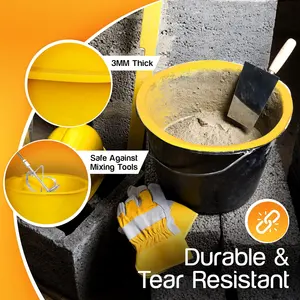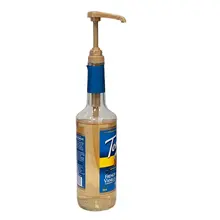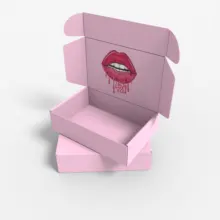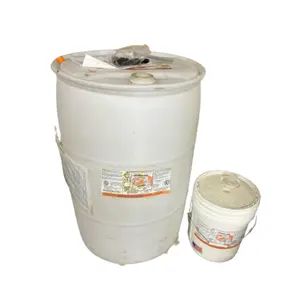Introduction
Choosing the right paint bucket size for your project, whether you're a homeowner or a professional, can significantly impact the outcome and efficiency of your work. This article provides a comprehensive guide on understanding paint bucket sizes, factors to consider when choosing the right size, and practical tips for both homeowners and professionals. It delves into the importance of paint quality, room size, type of paint, and the number of coats required. Furthermore, it offers strategies for professionals, including bulk buying and customizing paint buckets. Read on to make an informed decision for your next painting project.
Understanding Paint Bucket Sizes
Paint buckets come in various sizes, each serving a unique purpose. The most popular sizes are one pint, one quart, and one gallon. However, the range is more comprehensive, including five-gallon and ten-gallon sizes to as small as quarter-pints. The one-gallon paint bucket is a common choice for home projects, covering approximately 400 square feet. Quart-size paint buckets, containing 32 ounces of paint, are perfect for smaller projects. Pint-size paint buckets are ideal for very small projects like touch-ups. Five-gallon and ten-gallon paint buckets are typically used for commercial projects or very large areas.
Factors to Consider When Choosing Paint Bucket Size
When choosing a paint bucket size, consider the quality of the paint. Quality tends to track price, with higher-priced paint often having a higher volume of solids and better ingredients. The percentage of solids in a paint can indicate the thickness and quality of the protective paint film. Prime pigments offer better coverage, and a higher concentration of binders in the paint can resist cracking and peeling. Always remember, quality is a crucial factor when estimating the quantity of paint needed.
Room Size and Coverage
When planning a painting project, understanding the coverage of your chosen paint is crucial. The general rule of thumb is one gallon per 400 square feet. However, this is a rough guideline and the exact coverage can vary based on factors such as the texture of your walls, how thickly you're applying the paint, and the color you're using or attempting to cover up. For instance, covering a dark wall with a light paint color may require more paint. Always check the label of the paint brand for the exact coverage amount.
Type of Paint
The quality of paint plays a crucial role in determining the coverage and, by extension, the size of the paint bucket you'll need. High-quality paints, generally provide better coverage than their less expensive counterparts. This is particularly true for lighter colors. Therefore, investing in a good quality paint can lead to savings in the long run as you may require fewer coats, and consequently, smaller paint buckets.
Number of Coats
The number of coats you plan to apply also influences the amount of paint you'll need. Typically, two coats of paint are recommended for most surfaces for a smooth, even finish. However, this can vary depending on the type and color of the paint, as well as the surface being painted. Always consider this factor when choosing your paint bucket size.
Practical Tips for Homeowners
Choosing the right paint bucket size can be daunting, but understanding a few basic principles can make the process easier. Consider the mood you want to create in the room, as the color and finish of the paint can significantly impact this. Test different paint colors in various lighting conditions before making a final decision. Also, consider the size of the room and the type of paint you're using, as these factors will influence the amount of paint you'll need. Remember, white is a popular choice as it makes small spaces feel larger and matches all other colors.
Estimating Paint Quantity
Estimating the quantity of paint required for a project can be a daunting task. To calculate the paint needed for walls and ceilings, multiply the length by the width to get the square footage, then divide by 400. If you're not painting doors and windows, subtract their square footage from the total. For trim, calculate separately. Don't forget to account for a second coat on walls. Primer coverage is less, covering 200-300 sq. ft. per gallon, so you'll need more primer than paint. These calculations can help you estimate the right paint bucket size.
Choosing Quality Over Quantity
While it may be tempting to save money by purchasing cheaper paint, the quality of your paint significantly impacts the final result. Discount paints can flake and crack easily, leading to a worn-down appearance. On the other hand, high-quality paints, with proper application and maintenance, can last for years, providing a vibrant and desirable finish. Therefore, when choosing paint, it's crucial to prioritize quality over quantity to ensure a long-lasting and visually appealing result.
Strategies for Professionals
When it comes to professional painting, choosing the right paint bucket size is crucial. It's not just about the cost, but also about the quality of the paint. Lower-priced paints often use lower-quality pigmentation and contain more solvents, making them thinner and less durable. They may require more coats, leading to higher overall costs. On the other hand, higher-quality paints offer more durability and vibrant colors. They may be pricier, but the final result is often worth it. Remember, the right paint can make a significant difference in your professional painting project.
Bulk Buying
Are you looking to paint your whole house or a large project? Consider our bulk buy program. When you purchase 8 gallons or more, you'll save 10% off your paint purchase. This not only saves you money but also the hassle of remembering the exact color(s) you purchased for future touch-ups. Your purchase history will be securely saved in our system database. This strategy is particularly beneficial for professionals handling large-scale projects.
Customizing Paint Buckets
Customizing paint buckets is a trend that's gaining traction in the industry. Alibaba offers a variety of options, from high-quality thick packaging containers to rubberized silicone bucket liners. These products come in different sizes, catering to various needs. For instance, there are 5L, 10L, 20L, and 25L options available. Some buckets are designed with a focus on food-grade packing, while others are more suited for paint storage. There are also options for different designs and materials, such as PP plastic and tin. This variety allows for customization based on the specific requirements of the task at hand.
Conclusion
In conclusion, choosing the right paint bucket size is a critical aspect of any painting project. It's not just about the size of the room or the number of coats required, but also the quality of the paint and the type of project you're undertaking. For homeowners, understanding the mood you want to create and estimating the quantity of paint required can guide your decision. For professionals, considering the quality of the paint and the benefits of bulk buying or customizing paint buckets can make a significant difference. Remember, the right paint bucket size, coupled with high-quality paint, can lead to a more efficient process and a stunning final result.









































 浙公网安备 33010002000092号
浙公网安备 33010002000092号 浙B2-20120091-4
浙B2-20120091-4